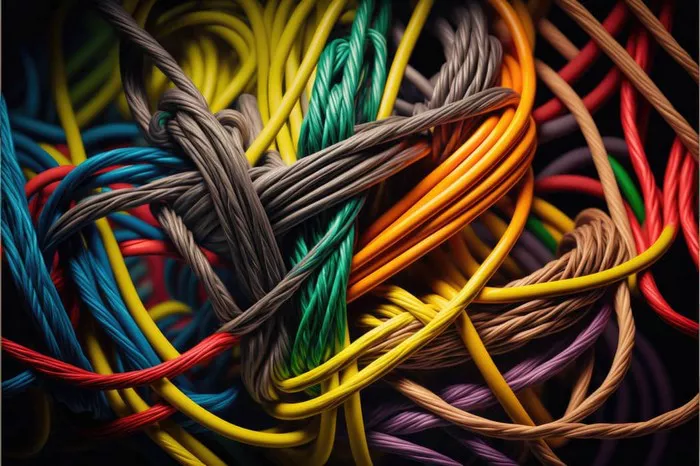In the field of electrical wiring, various types of cables are designed to meet specific requirements for safety, durability, and environmental conditions. One such cable is UF wire (Underground Feeder wire), a specially designed electrical wire used for outdoor and underground applications. This article explores the structure, working principles, applications, and benefits of UF wire, providing a clear understanding of its role in electrical installations.
What is UF Wire?
UF wire, short for Underground Feeder wire, is a type of electrical cable specifically designed for direct burial applications. It is heavily insulated to withstand moisture, soil conditions, and environmental wear, making it ideal for outdoor and underground use. UF wire is commonly used for wiring outdoor fixtures, underground circuits, and residential electrical systems where conduit protection is either unnecessary or impractical.
Structure and Composition of UF Wire
UF wire is constructed with durability and safety in mind. Its key components include:
- Conductors: The wire typically consists of solid or stranded copper conductors. Copper is preferred due to its excellent electrical conductivity and resistance to corrosion.
- Insulation: Each conductor is insulated with thermoplastic material such as polyvinyl chloride (PVC), which provides protection against electrical faults and environmental factors.
- Outer Sheath: Unlike standard Non-Metallic (NM) sheathed wire, UF wire features a solid, moisture-resistant outer sheath that encapsulates all conductors, offering superior protection against environmental exposure.
- Color Coding: The individual conductors are color-coded (black for hot, white for neutral, and green or bare for ground) to ensure proper installation and compliance with electrical codes.
Differences Between UF Wire and NM Wire
While both UF and Non-Metallic (NM) wire are used in residential applications, they have key differences:
- UF wire is designed for direct burial and outdoor use, while NM wire is primarily used for indoor applications.
- UF wire has a tougher, moisture-resistant jacket, while NM wire has a thinner sheath that requires conduit protection when used outdoors.
- NM wire is more flexible and easier to install indoors, whereas UF wire is more rigid due to its durable insulation.
Applications of UF Wire
UF wire is widely used in various electrical applications, including:
- Outdoor Electrical Installations: It is ideal for lighting circuits, power supply to outdoor outlets, and other electrical applications in gardens, backyards, and farms.
- Underground Wiring: UF wire is commonly buried directly in the ground to connect buildings, outbuildings, sheds, or garages.
- Water-Exposed Areas: Due to its moisture-resistant properties, UF wire is used in damp locations such as irrigation systems, pools, and landscape lighting.
- Rural and Agricultural Applications: UF cable is frequently installed in barns, poultry farms, and irrigation equipment, where exposure to environmental elements is high.
Installation Guidelines and Safety Considerations
When working with UF wire, proper installation is essential to ensure safety and compliance with electrical codes. Below are some important guidelines:
- Depth of Burial: According to the National Electrical Code (NEC), UF wire should be buried at a depth of at least 24 inches without conduit. However, this depth may vary based on local codes and specific conditions.
- Protection in High-Traffic Areas: If the wire runs under driveways or heavily trafficked areas, additional conduit protection is recommended.
- Avoid Sharp Bends: UF wire is more rigid than NM cable, so care must be taken to avoid sharp bends that could damage the insulation.
- Moisture Sealing: When terminating UF wire in junction boxes or panels, it is crucial to use weatherproof connectors and enclosures to prevent moisture ingress.
- Voltage and Amperage Ratings: Always check the gauge and amperage rating of UF wire to ensure it meets the requirements of the electrical circuit.
Benefits of Using UF Wire
UF wire provides numerous advantages over other types of electrical wiring, making it a preferred choice for outdoor and underground applications. Key benefits include:
- Moisture and Environmental Resistance: The heavy-duty sheath protects the conductors from moisture, soil chemicals, and UV exposure.
- Direct Burial Capability: Unlike NM wire, UF wire does not require conduit protection when buried underground.
- Durability: Its tough insulation withstands harsh environmental conditions, making it a long-lasting solution.
- Versatility: It is suitable for a wide range of applications, from outdoor lighting to agricultural power distribution.
- Cost-Effective: While slightly more expensive than NM wire, UF wire eliminates the need for additional conduit, reducing overall installation costs.
Limitations and Considerations
Despite its advantages, UF wire also has some limitations:
- Stiffness and Installation Difficulty: UF wire is more rigid than NM wire, making it harder to work with, especially in tight spaces.
- Limited Indoor Use: It is designed for outdoor and underground applications and is not suitable for most indoor wiring systems.
- Damage Risk: Although durable, UF wire can be damaged by digging or rodent activity, so proper burial and protection methods are necessary.
Conclusion
UF wire is a specialized electrical cable designed for underground and outdoor applications, offering excellent protection against moisture and environmental conditions. Its tough insulation, direct burial capability, and reliability make it a preferred choice for outdoor electrical installations. While it may be slightly more challenging to install than standard NM wire, its durability and long-term benefits far outweigh the drawbacks. Whether for landscape lighting, farm applications, or underground circuits, UF wire remains an essential component in modern electrical installations.

